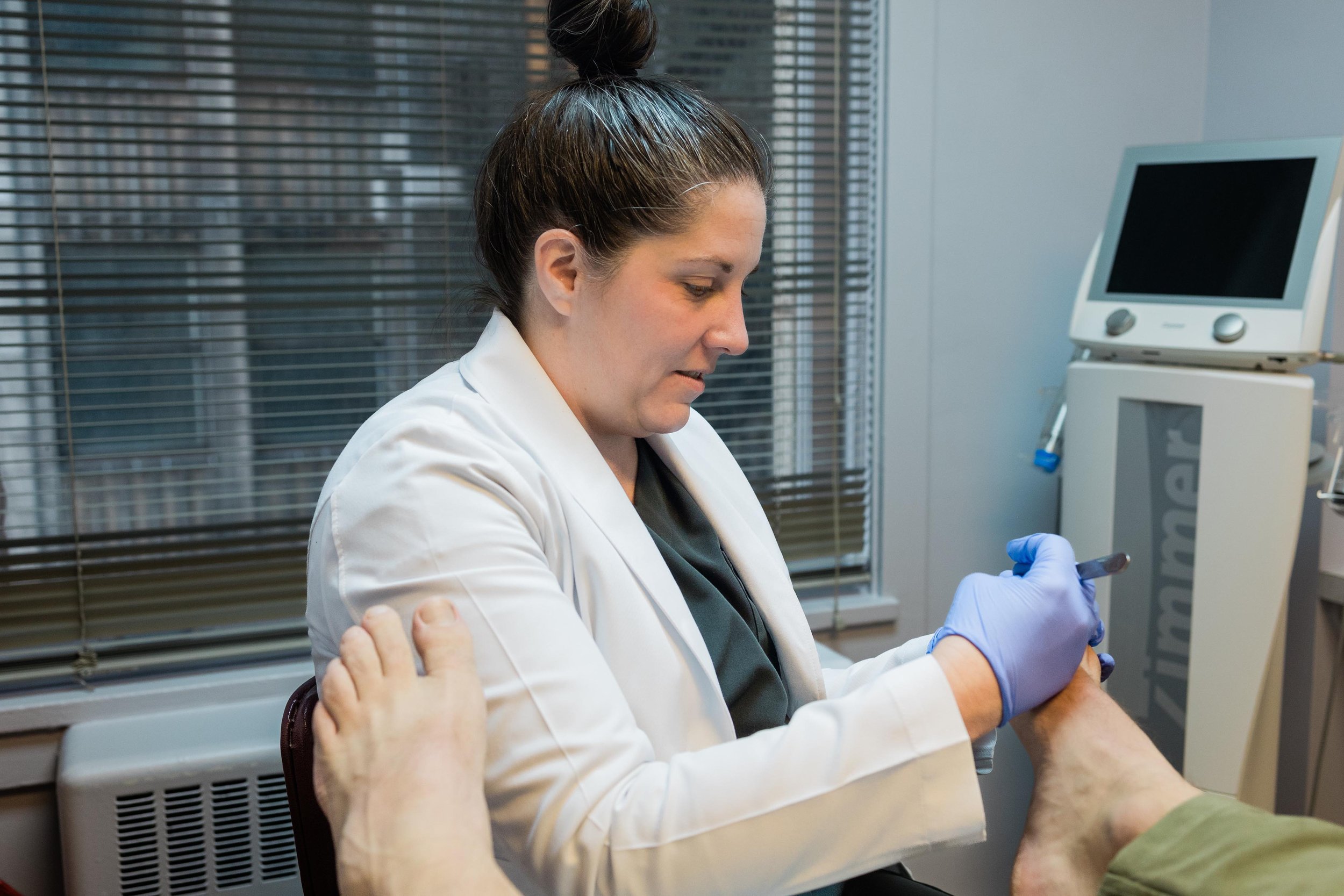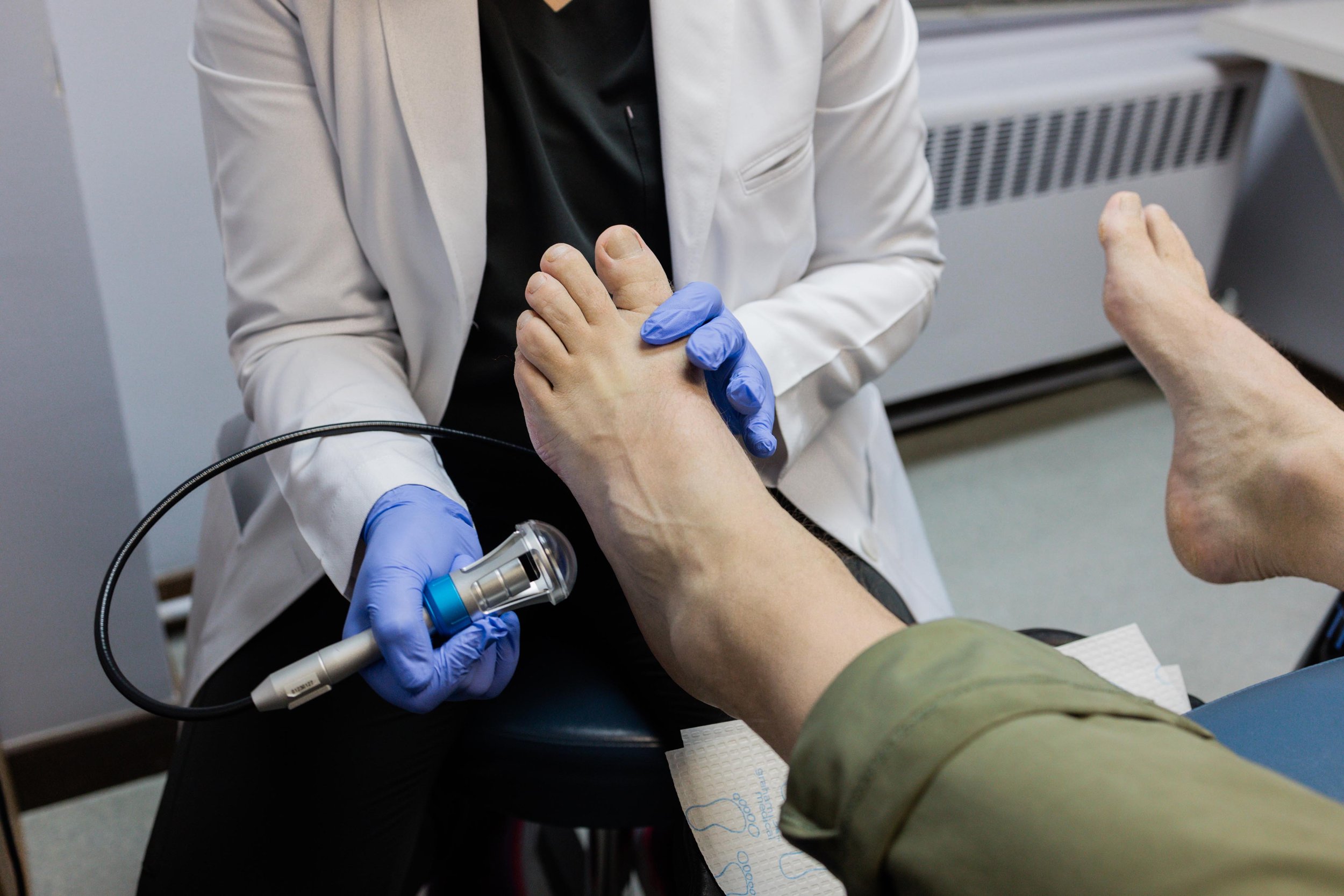Podiatry services in Chicago
City Step Podiatry services and treatments.
Our customized, comprehensive podiatry services ensure your feet and ankles get the personalized care you deserve to feel your best.
HOW CAN WE HELP YOU?
HOW CAN WE HELP YOU?
01.
Customized podiatry services
When you trust us with your foot and ankle care in Chicago, you’ll discover care and treatments that are personalized for your unique needs and goals.
GET TO KNOW US
Comprehensive podiatry services
From same day procedures to digital x-rays at the time of your appointment, City Step caters to your busy lifestyle with a wide range of podiatry services, designed to support active Chicagoans.
BOOK YOUR APPOINTMENT
02.
Specialized podiatry services
We’re proud to offer specialized podiatry services in our downtown Chicago office. These include Onyfix nail correction, Radial Shockwave Therapy, and Remy class IV laser therapy.
LEARN ABOUT SHOCKWAVE THERAPY
03.
No matter what you need, City Step can help you.
Custom orthotics from City Step Podiatry.
Feel supported from the ground up with our custom orthotics. Imagine every pair of shoes you own feel like they were made for you. Your feet no longer ache at the end of the day and your ankles feel strong and supported at all times. What a difference!
Your feet and ankles deserve to feel their best with our custom orthotics.
FAQ
-
The most common foot and ankle issues podiatrists treat include ingrown toenails, foot fungus, heel pain, ankle pain, heel spurs, athlete’s foot, plantar warts, and bunions.
Podiatrists are also trained to perform surgical procedures on the feet and ankles when necessary.
City Step Podiatry is your go-to podiatrist for treating a wide range of foot and ankle conditions, including—
– Heel pain
– Foot and ankle sports injuries
– Tendonitis
– Ingrown and/or fungal toenails
– Bunions and hammertoes
– Warts
– Calluses
– Acute gout
– Fractures and sprains
– Foot wounds and ulcers
– Neuromas and nerve pain
– Diabetic foot care
– And more!To learn more about the many feet and ankle conditions podiatrists are qualified to assess and treat, be sure to check out our blog, all about podiatrists and who they help.
-
Whenever you’re seeing a healthcare professional, it’s wise to ensure they’re vetted and possess the proper training to treat your issues safely snd thoroughly.
When you’re seeking a podiatrist, be sure they have the initials DPM after their name. This indicates they are a licensed Doctor of Podiatric Medicine.
In the United States, podiatrists undergo rigorous training and extensive schooling to become experts in treating issues that impact the feet and ankles. Following undergraduate studies, they complete a four year podiatry program, followed by a three year surgical residency. Many podiatrists obtain board certification, although this is not required in order to practice.
In addition to her extensive training and education in the field of podiatry, Dr. Alison Young, DPM, is also a member of several professional organizations, including the American College of Podiatric Medicine, the American Podiatric Medical Association, the Illinois Podiatric Medical Association, and American Academy of Podiatric Sports Medicine. She is board certified by the American Board of Podiatric Medicine.
Interested in learning more about how podiatrists train? Read our article, all about how podiatrists become podiatrists.
-
Foot pain is a common symptom that can arise from many underlying causes. To be certain what the source of your foot pain is, as well as the best way to treat it, it’s wise to schedule an appointment with a qualified podiatrist who can listen to you concerns, answer your questions, assess your feet, and help you determine the best approach to address your issue.
City Step Podiatry offers a wide range of treatment modalities, designed to effectively treat many different types of foot and ankle issues and conditions. When you trust us with your care, we’ll assess your needs and develop customized plan to address them.
Interested in learning more about foot pain, why it happens, and how to treat it? Check out our helpful deep dive article about foot pain while walking.
-
If you’ve never been to a podiatrist before, you may wonder what to expect or how to dress for your first appointment.
It’s usually best to wear loose fitting pants that can be rolled up, so your doctor can take a look at your lower legs and ankles. Your podiatrist will perform a thorough physical exam of your feet, ankles, and legs, to fully assess your symptoms and provide a diagnosis.
You should plan to remove your socks and shoes during your visit.
If you have specific questions or concerns about your appointment, you can always reach out to our office for personalized guidance and support, We’re here for you!
-
If you suffer from chronic foot and ankle pain, soreness, or fatigue, custom orthotics may be the solution to provide you the relief you seek.
Most people who get custom orthotics only wish they’d done so sooner. They notice a huge difference when their footwear provides them the support they need.
Unlike orthotics you can purchase off the rack, custom orthotics are created to fit your feet and your feet alone. It’s amazing what an impact this can have on your gait, stamina, and ability to move freely without pain and discomfort.
Want to learn more about how and why custom orthotics may be the solution you’re seeking for foot and ankle pain? Learn how City Step Podiatry creates custom orthotics that are made for you.
We have the experience, expertise, and equipment to help you feel your best.
When you trust us with your podiatry service needs in Chicago, we don’t take the responsibility lightly. We’ll collaborate to develop a personalized treatment plan to address all your foot and ankle care needs. Visit our Office page for info about our location and working with us.









